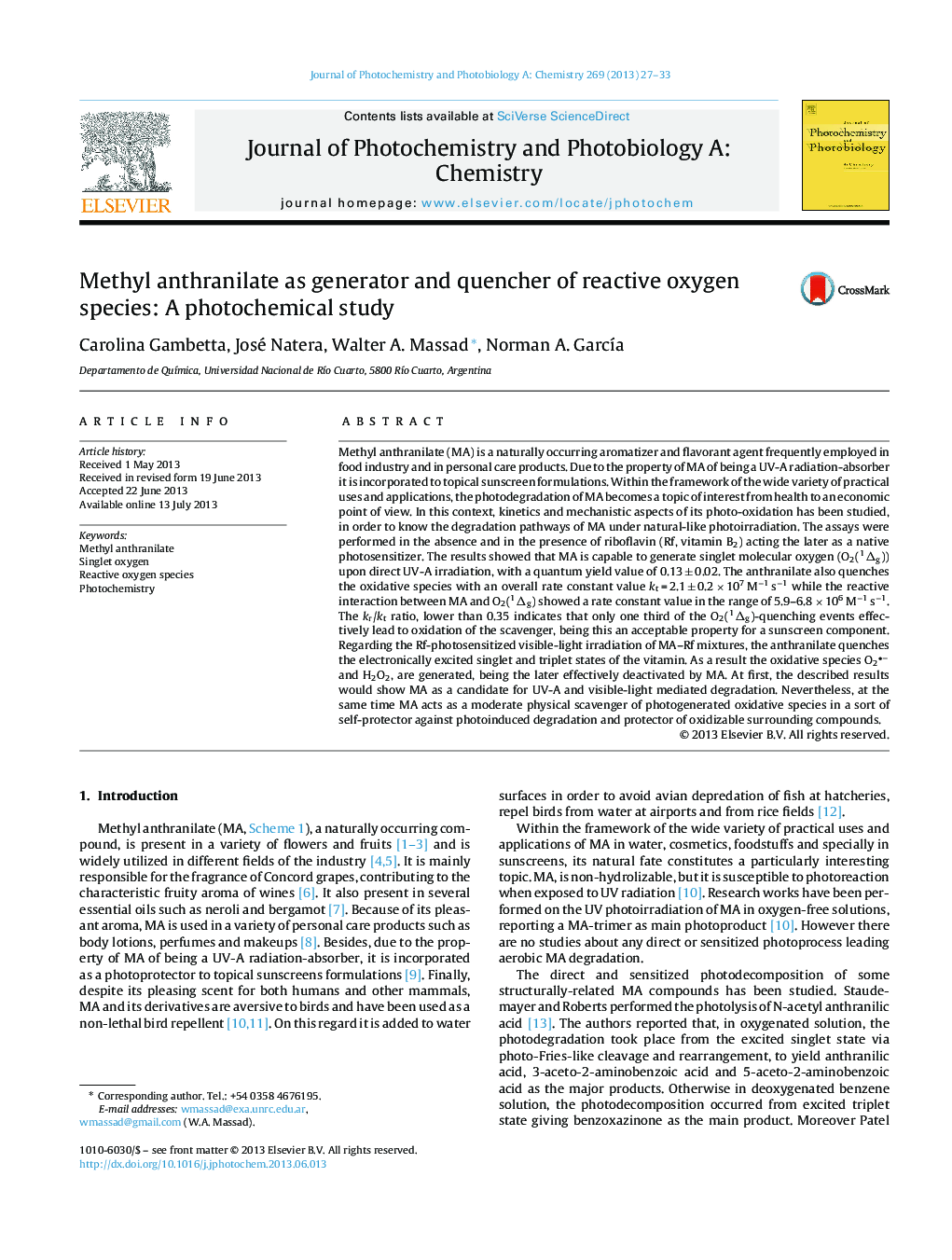| Article ID | Journal | Published Year | Pages | File Type |
|---|---|---|---|---|
| 27426 | Journal of Photochemistry and Photobiology A: Chemistry | 2013 | 7 Pages |
•Methyl anthranilate generates O2(1Δg) in solution upon direct photoexcitation, a non desirable property for a compound employed in sunscreens formulations.•Methyl anthranilate reacts with singlet molecular oxygen and qualifies as an moderate physical scavenger of O2(1Δg).•Methyl anthranilate quenches the electronically excited singlet and triplet states of the Riboflavin (vitamin B2).
Methyl anthranilate (MA) is a naturally occurring aromatizer and flavorant agent frequently employed in food industry and in personal care products. Due to the property of MA of being a UV-A radiation-absorber it is incorporated to topical sunscreen formulations. Within the framework of the wide variety of practical uses and applications, the photodegradation of MA becomes a topic of interest from health to an economic point of view. In this context, kinetics and mechanistic aspects of its photo-oxidation has been studied, in order to know the degradation pathways of MA under natural-like photoirradiation. The assays were performed in the absence and in the presence of riboflavin (Rf, vitamin B2) acting the later as a native photosensitizer. The results showed that MA is capable to generate singlet molecular oxygen (O2(1Δg)) upon direct UV-A irradiation, with a quantum yield value of 0.13 ± 0.02. The anthranilate also quenches the oxidative species with an overall rate constant value kt = 2.1 ± 0.2 × 107 M−1 s−1 while the reactive interaction between MA and O2(1Δg) showed a rate constant value in the range of 5.9–6.8 × 106 M−1 s−1. The kr/kt ratio, lower than 0.35 indicates that only one third of the O2(1Δg)-quenching events effectively lead to oxidation of the scavenger, being this an acceptable property for a sunscreen component. Regarding the Rf-photosensitized visible-light irradiation of MA–Rf mixtures, the anthranilate quenches the electronically excited singlet and triplet states of the vitamin. As a result the oxidative species O2− and H2O2, are generated, being the later effectively deactivated by MA. At first, the described results would show MA as a candidate for UV-A and visible-light mediated degradation. Nevertheless, at the same time MA acts as a moderate physical scavenger of photogenerated oxidative species in a sort of self-protector against photoinduced degradation and protector of oxidizable surrounding compounds.
